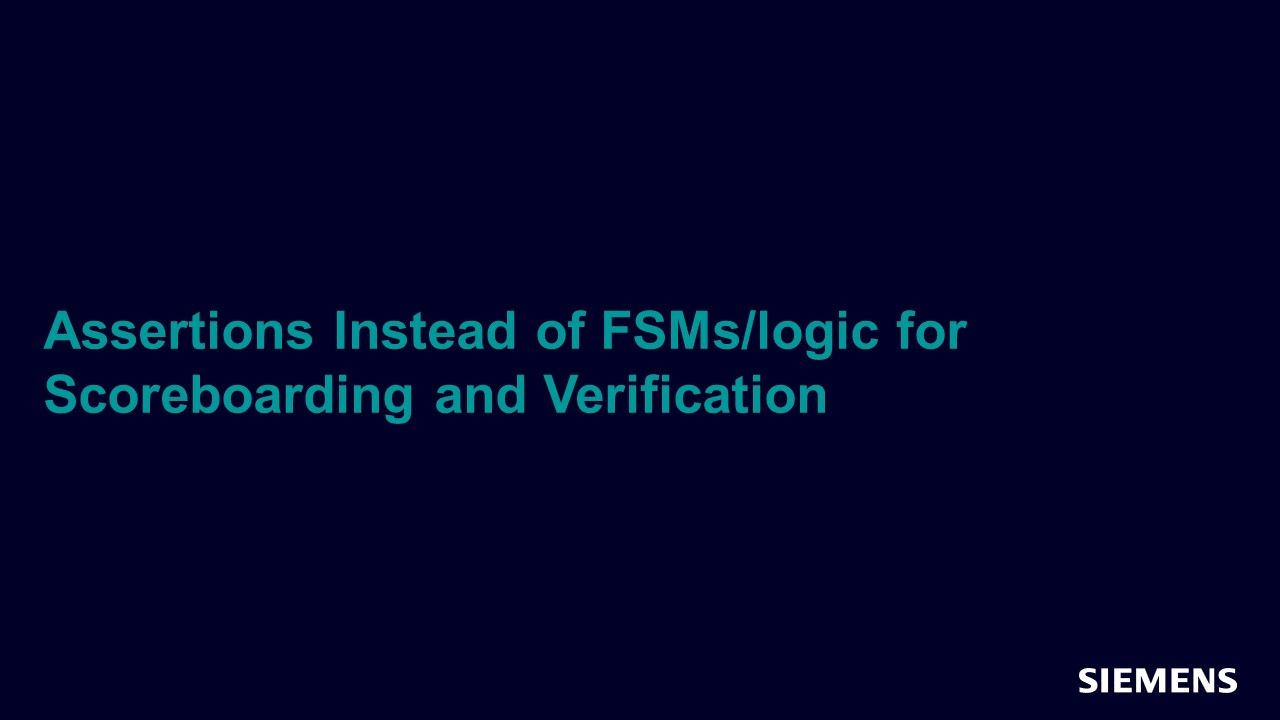Assertions Instead of FSMs/logic for Scoreboarding and Verification
Monitors, scoreboards, and verification logic are typically implemented using FSMs, logic, and tasks. With UVM, this logic is hosted in classes. This article demonstrates another option of implementing some monitors and scoreboards using SVA assertions hosted in SV interfaces.

Full-access members only
Register your account to view Assertions Instead of FSMs/logic for Scoreboarding and Verification
Full-access members gain access to our free tools and training, including our full library of articles, recorded sessions, seminars, papers, learning tracks, in-depth verification cookbooks, and more.